Hauoli Place
The ideal destination for those seeking adventure near Hawaii Volcanoes National Park, Hauoli Place is a beautiful, fun, and comfortable stay.

Throughout 2024 there were small eruptions that took place within the Kilauea Crater area and Volcanoes National Park. These eruptions often created a glow in the crater and even allowed visitors to see molten lava from the crater rim. In Dec of 2024 an impressive eruption series started in the Kilauea Crater and has been active on and off throughout 2025. The best eruption viewpoints for this eruption are along Crater Rim Trail, including Uēkahuna, Kilauea Overlook, Wahinekapu (Steaming Bluff), Kupina’i Pali (Waldron Ledge), behind Volcano House, Keanakako’i and other overlooks. This eruption has paused and started up again over 35 times with spectacular lava fountaining of up to 1500ft during some of the events.
There is currently no ocean entry of lava, therefore Lava boat tours are not currently operating due to the lack of molten lava flowing to the ocean. Hawaii Volcanoes National Park is open and has many volcano related things to do and see. Check the Park Website for daily updates, openings and closures related to the Kilauea Volcano and Volcanoes National Park.

Visiting Hawaii’s Active Volcano Region
No matter how long you plan to stay on the Big Island, you owe it to yourself and your group to make a journey to the southeast section of the island to visit Hawaii Volcanoes National Park, view the lava (when it is flowing) and see one of the most volcanically active areas in the world. A miracle of nature that isn’t easily found elsewhere on planet Earth, Hawaii provides incredible access perfectly suited to exploring an active volcano up close. Remember to always follow safety instructions from the rangers and to stay in safe areas away from ledges.
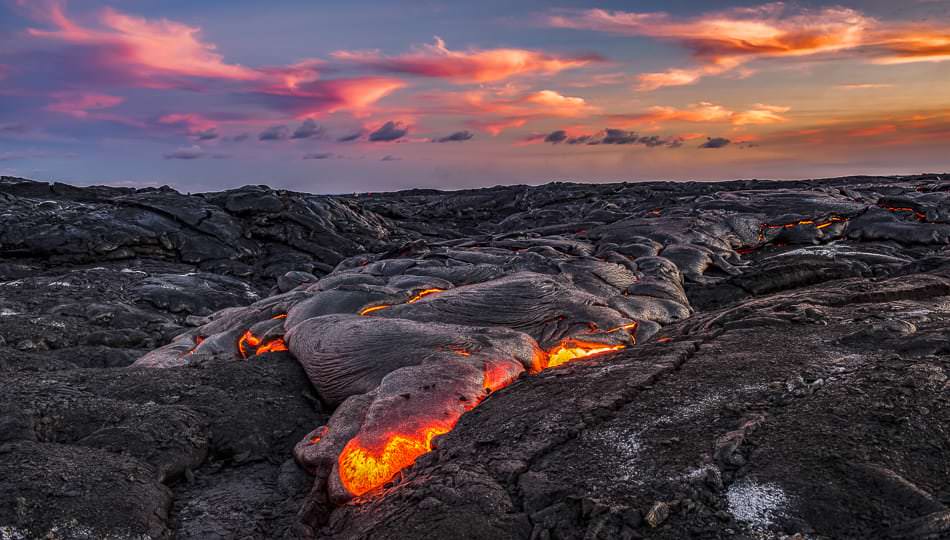
About Hawaii Volcanoes National Park
Established as the 11th U.S. National Park and the first in a U.S. Territory, the volcanoes present throughout the park’s 320,000+ acres are among the most easily accessible in the world. Spanning from sea level to the 13,000 ft. summit of Earth’s largest active volcano in Mauna Loa, the climate in the park varies from severe deserts to lush, dense rainforest environments.

With over 100 miles of hiking trails that take adventurers through rainforests, deserts, lava tubes, and up close and personal with lava flows (when they are flowing), it’s easy to spend multiple days in Hawaii Volcanoes National Park. Guided hikes led by park rangers occur on a daily basis as well as occasional park-sponsored activities and presentations.

Two campgrounds exist in the park for those who wish to stay overnight and catch an early glimpse of the park at dawn. The park is also car-friendly, allowing tourists to explore at their leisure (and with the benefit of air conditioning). At the time of writing, much of the Crater Rim drive is closed due to recent volcanic activity, but the Chain of Craters road provides a windy drive past several points of interest and scores of volcanic craters until the road terminates at the ocean.

How to Get There
Hawaii Volcanoes National Park is located on the southeastern end of the Big Island and is accessible from either the Hilo side or the western Kona side. From Hilo, expect a 45 minute drive along Highway 11 to the park. From Kailua-Kona, the trek takes visitors around the southern tip of the island along a 96-mile stretch of Highway 11 or 105 miles across Saddle Road through Hilo via Highway 190, Highway 200, and Highway 11. Saddle Road is typically the faster drive since much of the southern route is winding and has several speed zones.
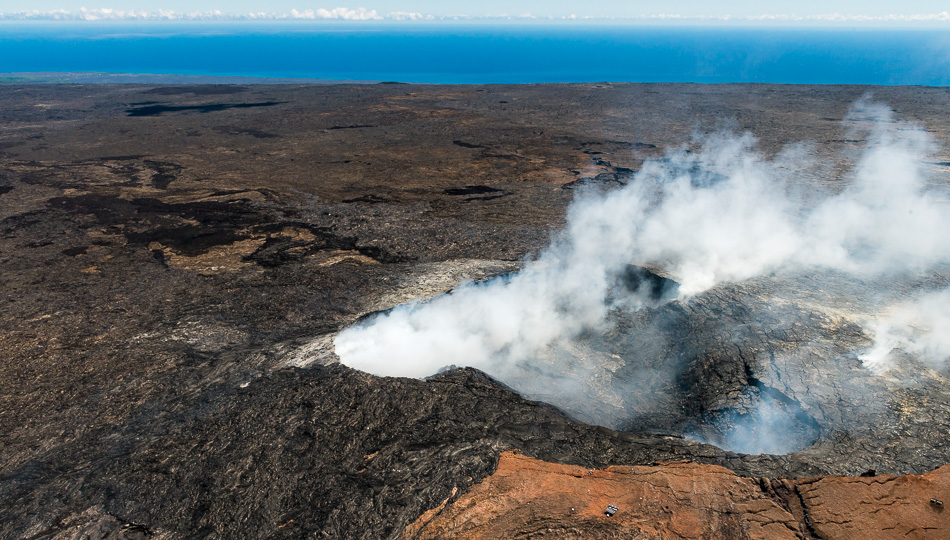
Halema’uma’u Crater Viewing
Throughout Hawaii Volcanoes National Park there are plenty of impressive viewing locations of the massive Halema’uma’u crater. There are many accessible overlooks that provide views of the crater. Recently, the lookout that used to be attached to the Jaggar museum has reopened. The area was severely damaged by seismic activity in 2018, and the museum itself was torn down in 2025. A daytime journey to the park provides views of the crater itself, and because the crater has continued filling back up with lava since 2021 after the 2018 east rift zone eruption, there is often a crater glow or lava fountaining at night against a background of stars.
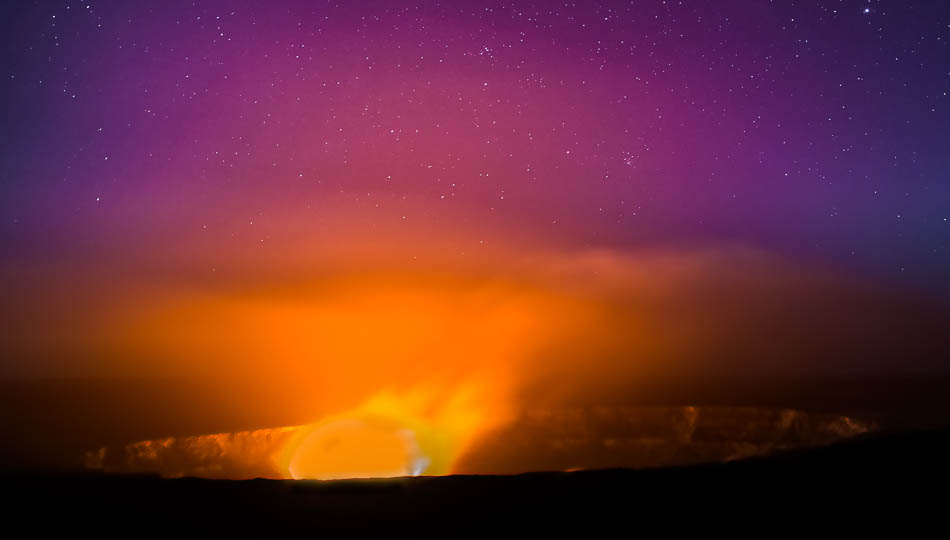
Kilauea Iki Crater
A four mile round trip hike along the Kilauea Iki trail will deliver views of an ohia forest and completes the journey at the geologically infantile crater floor. While the hike is a short one, its popularity and the 400 foot vertical climb up and down into the crater itself can add some difficulty to the trip. Starting early in the morning will keep things cool and a little less busy, and morning hours also offer excellent birdwatching potential as you venture onward. To reach the Kilauea Iki trailhead, park in the lot designated for the Thurston Lava Tube about 9 miles from the park’s entrance.
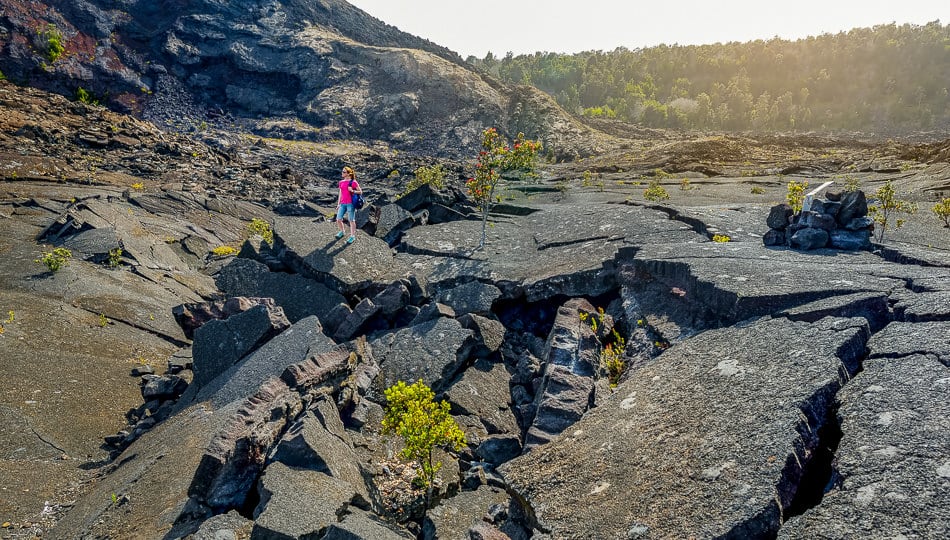
Nahuku (Thurston Lava Tube)
First discovered in 1913 by Lorrin Thurston, a newspaper publisher on the island, Nahuku is a massive cavelike lava tube that’s been updated with electric lights to help guide you through the tube’s chambers. With high ceilings and a flat rock floor, it’s the perfect opportunity to learn how lava flows shape the earth as they proceed. Some segments of the tube are completely dark and unlit, with uneven floors and low ceilings. Adventurous explorers who dare to venture the 50 yards into this section of the tube are rewarded with an intense physical experience that’s rewarded with an exit among a tropical rainforest. Bring a good flashlight if you would like to go all the way through.
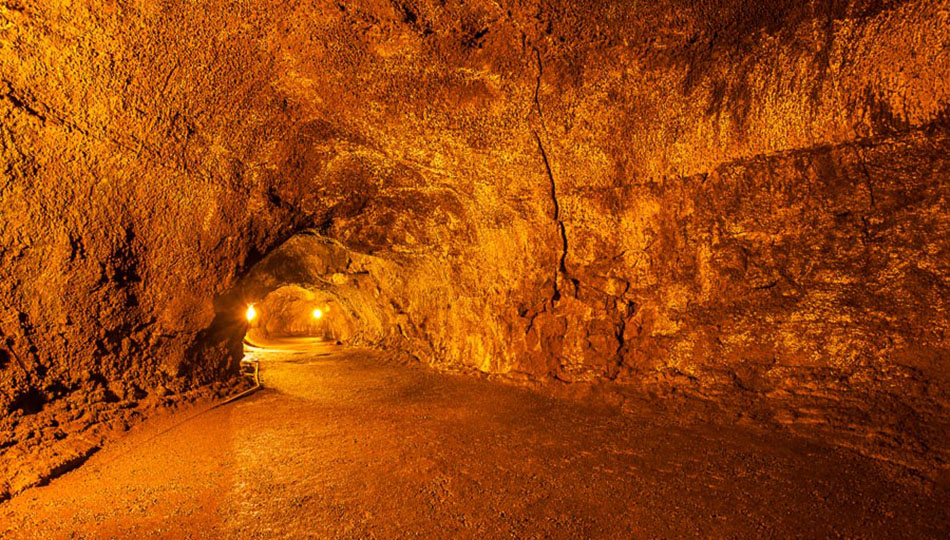
Chain of Craters Road
Situated along the southern side of the park, the Chain of Craters Road has long been used as a scenic route in which to view the various craters that make up the landscape from the visitor’s center down to the ocean. A section of the road is currently closed due to lava flows, but visitors can easily access the Lua Manu and Pauahi Craters as well as the Kealakomo Lookout and a view of the Holei Sea Arch before turning back toward the center of the park.

Recent Lava Flows
Because of ever-changing volcanic activity on the Big Island, it’s common for new lava flows to pop up or disappear every few years. As a result, a pop-up tourist culture develops around lava viewing at new lava flows as the U.S. Geological Service builds access roads to safe distances. In 2024 there are no sustained surface flows outside of the crater to be seen. However, there have been eruptions on and off that have stayed entirely contained within Halema’uma’u crater, that sometimes allow you to see an evening glow and molten lava or lava fountains within the crater.

The flaw flow near Kamokuna south east of Pu’u ‘O’o that began flowing in June 2014 was the most sustained recent lava viewing hot spot for locals, volcanologists, and visitors before the 2018 east rift zone eruption changed the flow of lava in the area. This flow was a remnant of the eruption at Kilauea that began more than 30 years ago, the flow disappeared for more than a month in early 2017 before a massive chunk of rock collapsed near the ocean and exposed the lava stream to public view and it disappeared again after the 2018 east rift zone eruption.

Due to the ever-changing nature of the volcano, your ability for lava viewing and potential proximity to it may change at any time. Throughout the summer of 2018, the huge release of lava from the east rift zone ushered in a pause of the extended eruption and halted flowing lava outside of the crater itself. Lava can return at any time and smaller eruptions have occurred within the park. When flows are present, the park staff determines if viewing points are safe and provide access accordingly. The U.S.G.S. provides daily updates on the Kilauea volcano, and you may also view the recent lava flow map or call the park at (808) 985-6000 for more information.

East Rift Zone
Many people don’t realize that the eruption that grabbed media headlines through out the summer of 2018, was not actually in Hawaii Volcanoes National Park, it was located in the area known as Puna, on the south east corner of the Big Island. While much of Leilani Estates, where fissure 8 was located, is still closed to visitors and you should stay off of the lava flow itself, you can travel into the region where the 2018 east rift zone eruption occurred and see some pretty interesting sights.

Lava Tree State Park is very close to where the flow crossed a major road and you can see the wall of lava that it left behind. The park itself is an incredible opportunity to see how lava behaves when it hits a wet forest, forming lava tree husks. This is a beautiful spot to picnic while you explore the area.
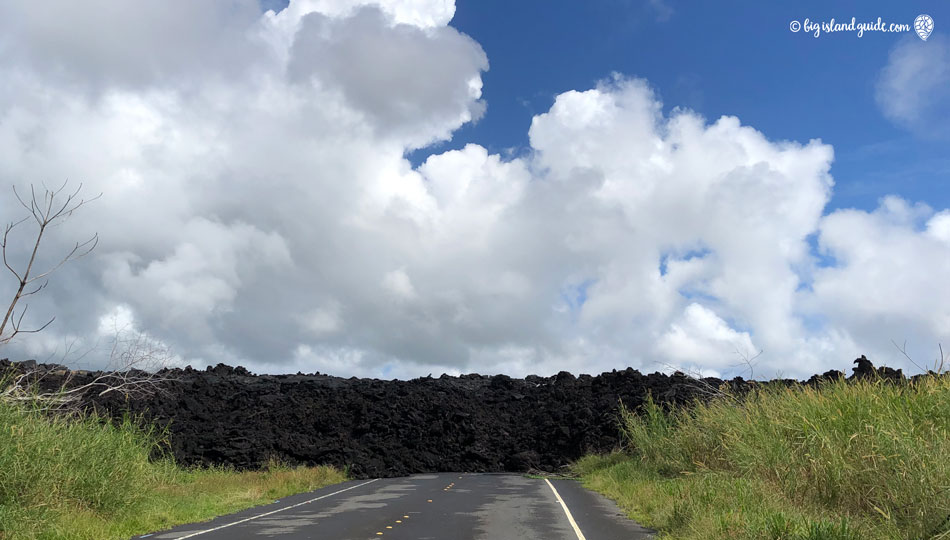
Most of the roads have been cleared by cutting through the lava that flowed across the land, but not all of them. The lava flow deposited a pile of what is known as a’a lava, separate chunks of rough angular lava along its path. It’s staggering to think of how much lava flowed out of fissure 8 and made its way to the ocean.

The stretch of road that takes you to Issac Hale Beach Park has been cleared and gives you a glimpse up the 2018 lava flow zone. Issac Hale Beach Park and Pohoiki Beach was narrowly spared by the flow and you can see where it was mere feet from being covered over.

A huge black sand beach formed at Pohoiki from the lava hitting the water and being shattered into fine black sand. Time will tell if this beach will hold up to the strong currents in the area. A project has begun to dredge the sand that filled the boat channel and return the ramp to functionality, but it has experienced setbacks as the channel has filled with sediment from strong ocean currents.

What to Bring
No matter how long you plan for a hike in the park or a lava viewing trip, it’s important to be prepared for a longer, hotter day than you may have anticipated. Strong shoes and sun-appropriate clothing is highly recommended – the heat of the Big Island’s southern side is exasperated by the vast lava fields.
For evening/late afternoon journeys, it’s a wise move to pack an extra flashlight for everyone in your group. If you’re venturing via bicycle, the use of headlamps and bike-mounted flashlights is a must.
The National Park Service also recommends each person pack at least a gallon of water, closed-toe footwear, gloves, long pants to help protect against lava rock abrasions, sunblock, sunglasses, and headwear.
Directions and Operating Hours
Hawaii Volcanoes National Park is open to the public 24 hours a day, 365 days per year. The Kilauea Visitor Center is accessible via Highway 11 about 30 miles southwest of Hilo and is open daily between 9AM and 5PM. (There is a temporary closure of the Visitor Center planned that will start in February of 2025 and will likely last two years. Visitor Information will be available at the Kilauea Military Camp during this closure.)
Entrance Fees
General admission is available for each non-commercial vehicle for $30. Pedestrians and bicyclists can gain access to the park for $15. Each pass provides access for seven days. You must now purchase your pass digitally or with a credit card as cash is no longer accepted.
Full-time residents or repeat visitors can buy the annual Hawaii Tri-Park pass, which provides year-long access to Hawaii Volcanoes National Park, the Pu’uhonua o Honaunau National Historical Park, and the Haleakala National Park located on Maui. The pass is $55 and includes access for a single vehicle or the pass holder and their immediate family while traveling on foot or via bicycle.
Self-Guided Tours
If equipped with a map, plenty of water, and an appetite for self-motivated fun, you’re welcome – and encouraged! – to check out Hawaii Volcanoes National Park on your own. Depending on current conditions and safety restrictions, your access and proximity to lava viewing locations may be impacted. Before you head out, check the daily updates from the U.S.G.S. or call the park at (808) 985-6000.

Guided Tours
Ranger-led hikes to the main crater at Halema’uma’u are a daily occurrence, and provide a wonderful free tour experience. If you want to see additional terrain around the lava flows with a guide that can provide insightful background information on the history of the flows, a guided tour is your best bet. While you’re able to visit the flows on your own and without hiring a professional guide, the benefits of a knowledgeable local guide are numerous.
You’ll be with a group should you go the tour guide route, but your guide will keep you moving in the right direction and make the best use of your time along the hike. Due to the nature of the lava flows and the near-constantly changing conditions, it’s not recommended you book a tour more than a few days in advance for lava viewing (when lava is flowing).
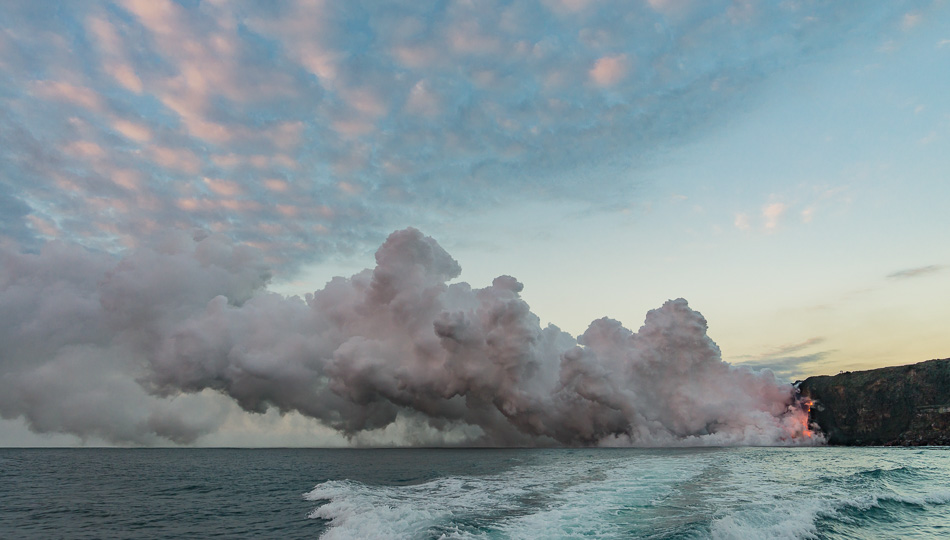
Guided Lava Boat Tours
When lava flows are entering the ocean, it’s possible to venture out onto the water and try lava viewing from a lava boat. A visit to the flows via the ocean provides a close viewing position, and the viewing angle is unique and perfect for photography.
Due to the safety zone set up by the U.S. Coast Guard, boats must remain 300 meters from entry points. Furthermore, it’s recommended that visitors only choose safety-minded and licensed lava boat tour operators. The white plumes created by the entering lava create corrosive water droplets and generate toxic gasses. Check with your tour operator to ensure they hold the proper license and training needed to keep you and your party safe on your lava boat tour.
Lava Helicopter Tours
If you have the resources and inclination (or are hoping to get some aerial footage of the volcano), a helicopter tour gets you closer to the action that isn’t as easily accessible via land or by boat. Taking off from either Kona or Hilo, your journey will take you over the crater, any current surface flows for lava viewing, and lava trails from recent flows.
The ideal destination for those seeking adventure near Hawaii Volcanoes National Park, Hauoli Place is a beautiful, fun, and comfortable stay.
An adults-only bed and breakfast, this luxury retreat offers ultimate privacy and relaxation for a pampered stay on the Big Island.
The Thomas A. Jaggar Museum is permanently closed due to damage from the 2018 Kilauea Eruption. It will be deconstructed starting in 2024. Read about the museum’s history here.